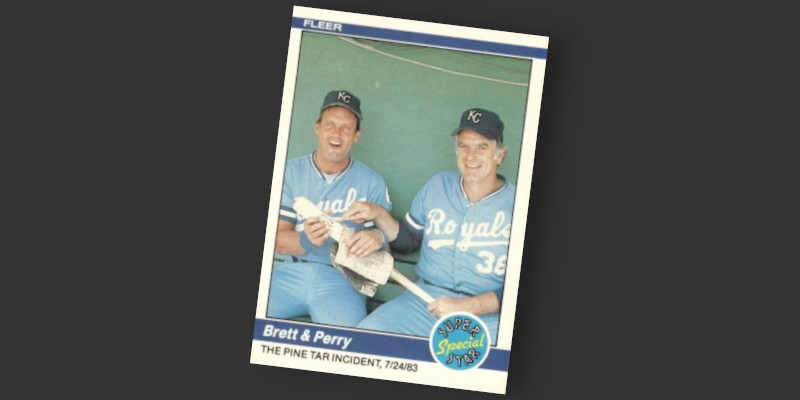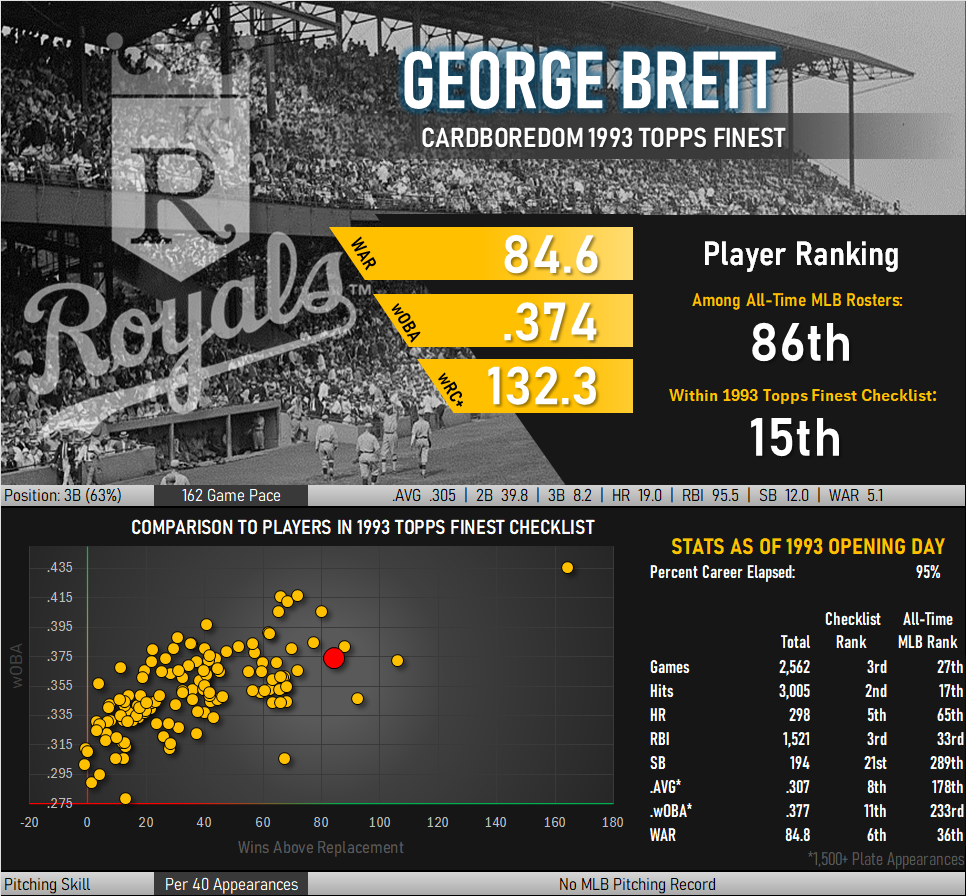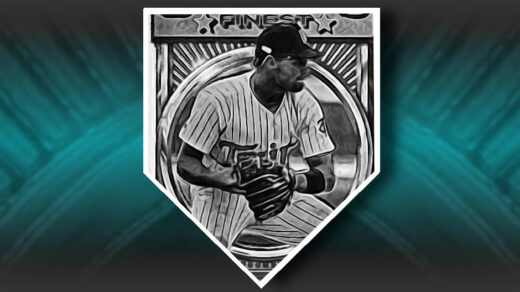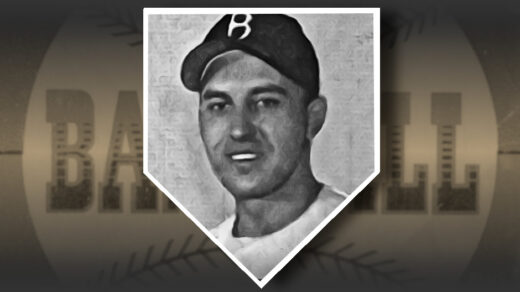The 1993 Topps Finest set contains final year cards of several well known veteran players. Nolan Ryan leads the pack, appearing in his 26th year of baseball cards. Carlton Fisk is shown in his last season in Chicago and Robin Yount appears in the same role for Milwaukee. While the latter were well known for their offensive prowess, another fan favorite was making his final lap around the league.
Three months after the debut of these cards, Brett called a press conference and announced his intention to retire at the conclusion of the season. Like Yount, he had played his entire career with one team and had more than 3,000 hits to his name. Hitting was Brett’s specialty and the baseball world knew it.
Brett made pitchers work to get him out, drawing more walks than strikeouts for 14 consecutive years. He’s one of four players with at least 3,000 hits and less than 1,000 strikeouts, joining Stan Musial, Wade Boggs, and Tony Gwynn. Brett didn’t eclipse 50 strikeouts until his tenth season with the Royals. Pitchers induced him to ground into double plays at the same rate they issued him intentional walks. Averaging 8 triples per 162 games played, Brett sped his way into the 20-20-20 club with at least 20 doubles, triples, and home runs in a single season. 300+ career home runs only added to the pile. It’s no wonder that it was someone of Brett’s ability that coined the phrase “Mendoza Line” to describe minimum hitting standards in MLB.
Brett, a constant presence on American League All-Star teams for well over a decade, spent most of his career racking up excellent baseball while not really challenging for the lead in most statistical categories. There was, however, one season in which Brett’s bat went to war with AL pitching and he cemented his reputation.
Brett hit .390 in 1980, the highest AL total since Ted Williams topped .400 in 1941 and a level that has only been seen once in my lifetime. Brett didn’t just hit a few more singles than normal during the season, he was almost unstoppable. After Memorial Day he batted an insane .432 through the end of the season and drove in an average of more than one run per game for the entire season. During the summer of 1980, Brett was effectively a more prolific hitter than Ty Cobb’s highest average season. It’s no wonder that Terry Cashman referred to Brett as “the greatest” when switching the lyrics of his 1981 song “Talkin’ Baseball” out of the game’s classic era into the 1980s.
Fleer Has a Sense of Humor
A couple years after Brett flirted with .400, he was a central part of one of the more absurd moments in the game’s history. Brett hit a go-ahead two run home run in the 9th inning of a game against the Yankees, only to be called out with the hit nullified due to excessive pine tar on the handle of his bat. The umpires’ ruling was overturned by the league president, allowing the hit to stand and the Royals to eventually be declared the winners of a game that ended up being played on two different days.
For his part, Brett initially gave the impression that the life of Yankees manager Billy Martin was in danger. He had calmed down by the following year, allowing a Fleer photographer to set up a shot making fun of the whole incident. Card #638 of the 1984 Fleer set shows a smiling Brett working on a bat in the Kansas City dugout. Sitting next to him is Gaylord Perry, the pitcher most associated with dishonest pitching and modified baseball equipment. The pair are laughing as they modify Brett’s bat, presumably to result in more game winning home runs.


I have Brett ranked as the sixth best position player appearing in the ’93 Finest set and well within the sport’s all time top 100. That ranking could have been higher had he not missed more than 250 games due to stints on the disabled list during his career. Jay Jaffe ranks Brett as the fourth best MLB player at third base and estimates he could have been the second best behind Mike Schmidt if he had remained healthy.

Above: It’s always interesting when a winner of multiple batting championships is depicted as a baserunner on a card.









